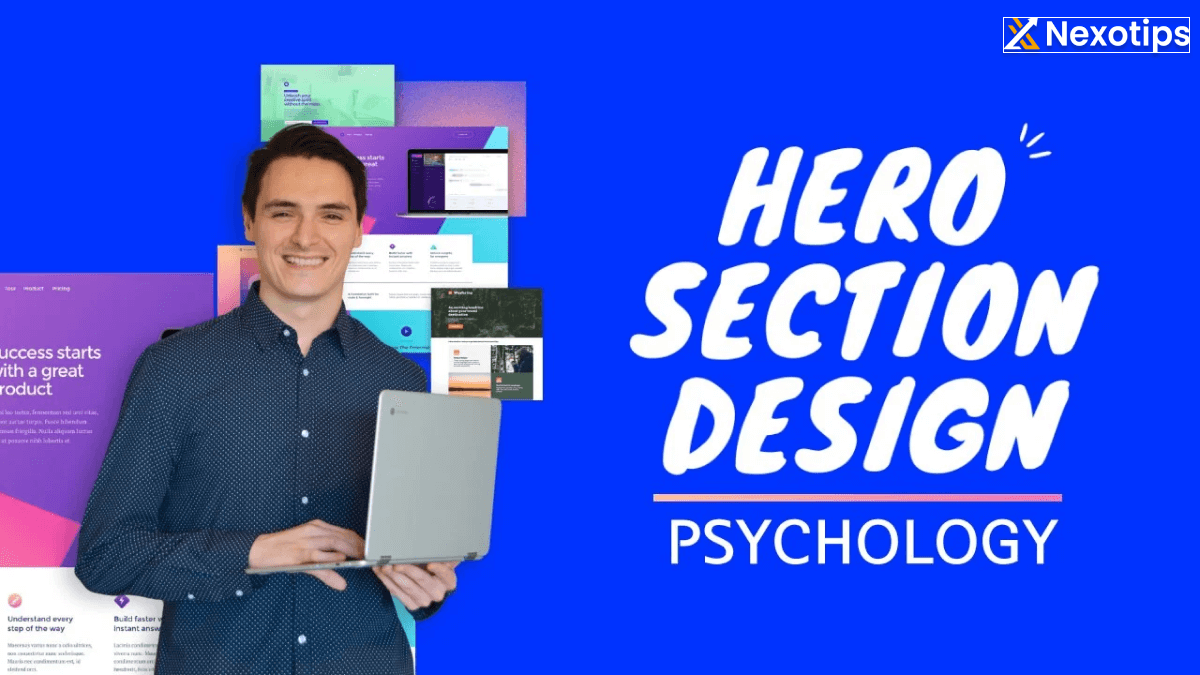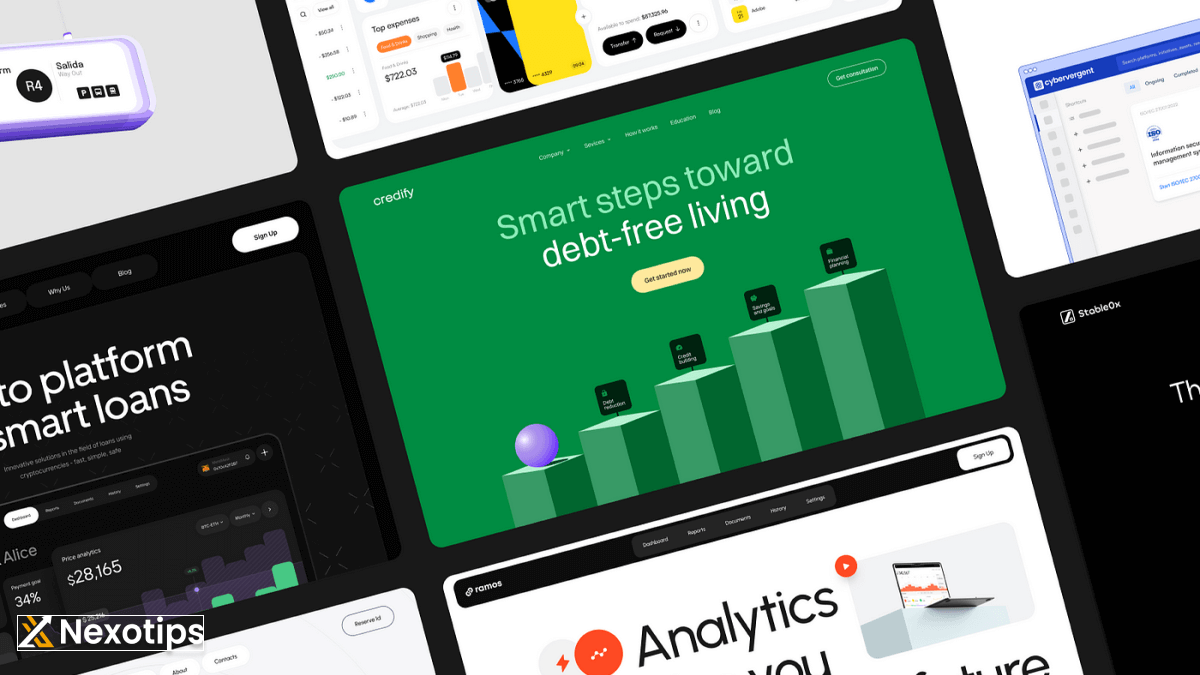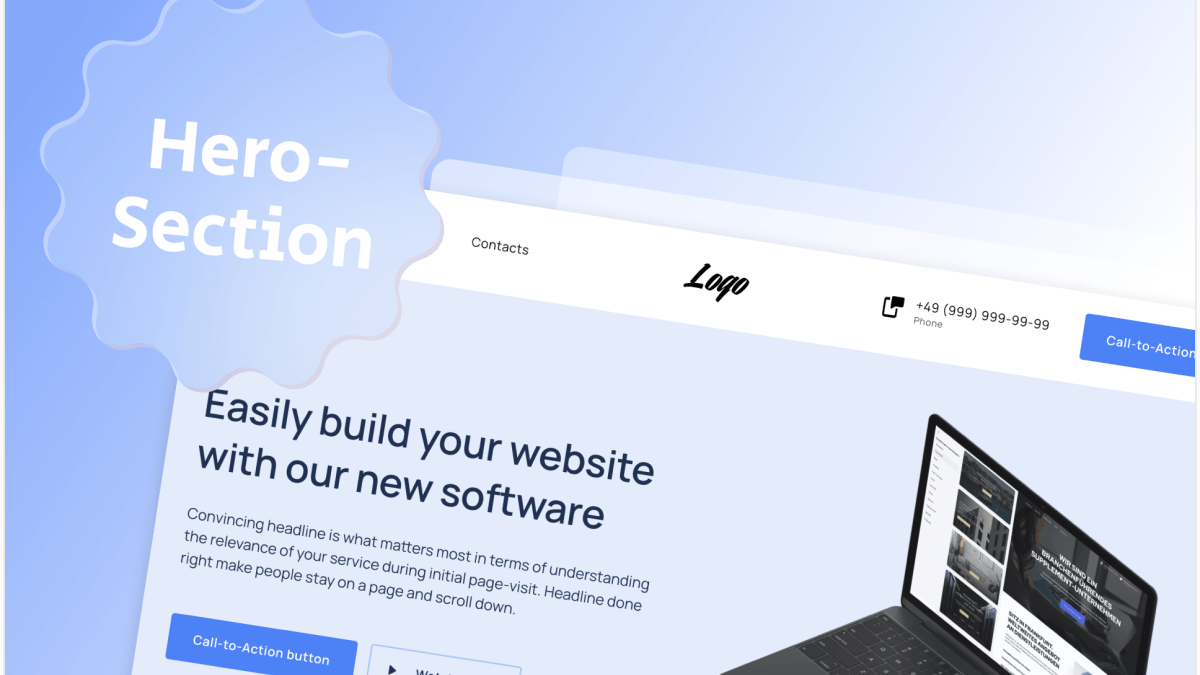
Hero Section : Crafting an Irresistible Website in 2024
In the dynamic world of web design, the hero section of a website plays a crucial role in the capturing visitors’ attention and enticing them to explore further. A well-crafted hero section can make the difference between a bounce and a conversion. In this comprehensive guide, we’ll delve into the intricacies of creating a great website hero section that not only dazzles but also compels users to take action.
How to Create a Great Website Hero Section :
Understanding User Psychology:
- Conduct thorough user research: Utilize tools such as surveys, interviews, and analytics to gather insights into your target audience’s behavior, preferences, and pain points.
- Create user personas: Develop detailed profiles of your ideal customers, including demographic information, goals, challenges, and motivations. This helps tailor your hero section to resonate with specific audience segments.
- Consider the user journey: Map out the typical paths users take when interacting with your website, from the initial landing page to conversion. Identify touchpoints where the hero section can influence user decisions and drive action.
- The user journey begins the moment they land on your website, and the hero section serves as the gateway to their exploration. To entice users to take the next step, it’s essential to understand their motivations and desires. Whether it’s solving a problem, seeking information, or making a purchase, aligning your hero section with user goals is paramount.
Keeping User Goals in Focus:
- Prioritize primary goals: Identify the most important actions you want users to take on your website, such as making a purchase, signing up for a newsletter, or contacting your business.
- Align hero section content: Ensure that the content and design of your hero section directly support these primary goals. This might involve prominently featuring product offerings, highlighting key benefits, or providing clear calls-to-action (CTAs).
- Test and iterate: Continuously monitor user behavior and performance metrics to evaluate the effectiveness of your hero section in driving desired outcomes. Make adjustments based on feedback and data to optimize for user goals.
- Amidst the temptation to showcase every aspect of your brand or product, it’s crucial not to lose sight of user goals. The hero section should provide clear direction and immediately address the user’s primary needs or interests. By keeping it concise and focused, you prevent overwhelming visitors and guide them towards meaningful engagement.
Embracing Simplicity:
- Focus on essential elements: Determine the core message or value proposition you want to convey in your hero section, and eliminate any extraneous information or distractions.
- Use whitespace effectively: Allow sufficient space around key elements such as headlines, images, and CTAs to reduce visual clutter and improve readability.
- Maintain visual consistency: Stick to a cohesive color scheme, typography, and design style throughout the hero section to create a polished and professional appearance.
- Clutter is the enemy of effective web design. A cluttered hero section can overwhelm users and dilute your message. To create a compelling visual experience, embrace simplicity. Streamline your content, prioritize key elements, and eliminate unnecessary distractions. Remember, less is often more when it comes to captivating your audience.
Transforming Goals into Visual Magnets:
- Choose compelling imagery: Select high-quality photos, illustrations, or videos that resonate with your target audience and evoke the desired emotions or associations.
- Incorporate dynamic elements: Experiment with animations, transitions, or interactive features to add visual interest and engage users as they interact with the hero section.
- Optimize for mobile: Ensure that visual elements are responsive and optimized for various screen sizes and devices to provide a seamless experience across platforms.
- Visuals are powerful communicators that can instantly captivate users’ attention. To turn user goals into visual magnets, leverage compelling imagery, videos, or graphics that resonate with your audience. Whether it’s showcasing your product in action or evoking emotions through storytelling, let visuals speak louder than words in your hero section.
Identifying Trigger Points:
- Understand psychological triggers: Familiarize yourself with common triggers such as social proof, scarcity, authority, and reciprocity, and consider how they can be integrated into your hero section to influence user behavior.
- Craft persuasive copy: Use compelling language and persuasive techniques to create a sense of urgency or desire, prompting users to take action. Test different messaging approaches to see what resonates most with your audience.
- Humans are wired to respond to certain triggers, whether they’re explicit or implicit. In your hero section, look for specific triggers that resonate with your target audience. This could be a compelling call-to-action, a persuasive testimonial, or a captivating headline that sparks curiosity. By strategically incorporating trigger points, you can elicit desired responses from users.
Highlighting Benefits:
- Focus on user-centric messaging: Emphasize the value proposition of your products or services and how they address specific pain points or fulfill user needs.
- Use storytelling: Share success stories, testimonials, or case studies that demonstrate the tangible benefits and outcomes experienced by satisfied customers.
- Provide clear value propositions: Clearly communicate the unique selling points or competitive advantages of your offerings, highlighting why users should choose your brand over alternatives.
- Users are inherently self-interested and are more likely to engage when they perceive personal benefits. Whether explicit or implicit, your hero section should clearly communicate the value proposition of your product or service. Showcase how you can solve their problems, fulfill their needs, or enhance their lives, and you’ll capture their interest and drive conversions.
Managing Attention Effectively:
- Establish visual hierarchy: Arrange elements within the hero section in order of importance, using size, color, contrast, and positioning to guide users’ attention toward key focal points.
- Minimize distractions: Avoid cluttering the hero section with unnecessary elements or competing calls-to-action that might divert users’ attention away from the primary message or goal.
- Leverage directional cues: Use visual cues such as arrows, lines, or imagery that directs the user’s gaze toward important content or actions, encouraging them to engage further.
- With countless distractions vying for users’ attention, it’s essential to manage their focus within the hero section. Utilize visual hierarchy, strategic placement, and compelling copy to guide users’ attention towards key elements such as your headline, call-to-action, or primary message. By controlling the flow of information, you can keep users engaged and motivated to explore further.
Harnessing the Power of Relevant Images:
- Select imagery with purpose: Choose visuals that align with your brand identity, evoke the right emotions, and resonate with your target audience’s preferences and interests.
- Consider context and relevance: Ensure that images are contextually relevant to the content or message of the hero section, whether it’s showcasing products in use, illustrating concepts, or depicting desired outcomes.
- Opt for high-quality visuals: Use crisp, high-resolution images that maintain clarity and detail across different screen sizes and resolutions, enhancing the overall visual impact of the hero section.
- Images are not merely decorative elements but powerful tools for conveying your brand’s identity and message. Choose images that are not only visually appealing but also relevant to your content and audience. Whether it’s high-quality photography, custom illustrations, or striking graphics, select visuals that resonate with your brand narrative and evoke the desired emotions.
Crafting a Compelling Tagline:
- Keep it concise and memorable: Aim for brevity and clarity in your tagline, distilling your brand’s essence or value proposition into a succinct phrase or sentence.
- Focus on differentiation: Highlight what sets your brand apart from competitors and why users should choose your products or services over alternatives.
- Test for effectiveness: Experiment with different taglines and messaging variations to see which resonates most with your target audience, using A/B testing or user feedback to inform your decision.
- In a world inundated with information, attention spans are fleeting. A short, powerful tagline can serve as the anchor of your hero section, encapsulating your brand essence and value proposition in a few words. Keep it concise, memorable, and action-oriented, compelling users to delve deeper into your website and discover more.
Subtlety in Call-to-Action (CTA):
- Use strategic placement: Position CTAs prominently within the hero section, making them easily accessible and visible to users without overshadowing other content.
- Optimize for clarity: Ensure that CTAs are clearly labeled and communicate the desired action, using concise language and compelling verbiage to encourage engagement.
- Create a sense of urgency: Incorporate persuasive language or time-limited offers to instill a sense of urgency and motivate users to act promptly.
- While the call-to-action (CTA) is a vital component of the hero section, its effectiveness lies in its subtlety. Avoid overwhelming users with aggressive or intrusive CTAs. Instead, integrate them seamlessly into your design, using contrasting colors, compelling copy, and strategic placement to draw attention without being obtrusive. A well-crafted CTA should inspire action while maintaining the harmony of the overall design.
By incorporating these detailed strategies into your website’s hero section, you can create a compelling and effective focal point that captures users’ attention, communicates your brand’s value, and drives meaningful interactions and conversions.



